Disclosure: We may get commissions for purchases made through links in this post.
Incorporating grasses between your pavers is indeed helpful in beautifying your yard. And for sure, you are trying to find out the best grasses to grow, yes? You are in luck opening this article! We already have the answers since we just finished our thorough research on the topic.
The best grasses to grow in the shade are:
- Blue star creeper
- Creeping wire vine
- Baby tears
On the other hand, the best grasses to grow in the sun are:
- Rupturewort
- Kangaroo grass
- Mondo grass
We categorized the best grasses to grow between your pavers into two categories so that you can easily distinguish what suits your pavers' location the best. And if you want to learn more and better understand those grasses, we encourage you to continue reading until the end of this post. Doing so might also satisfy some of your curiosities.
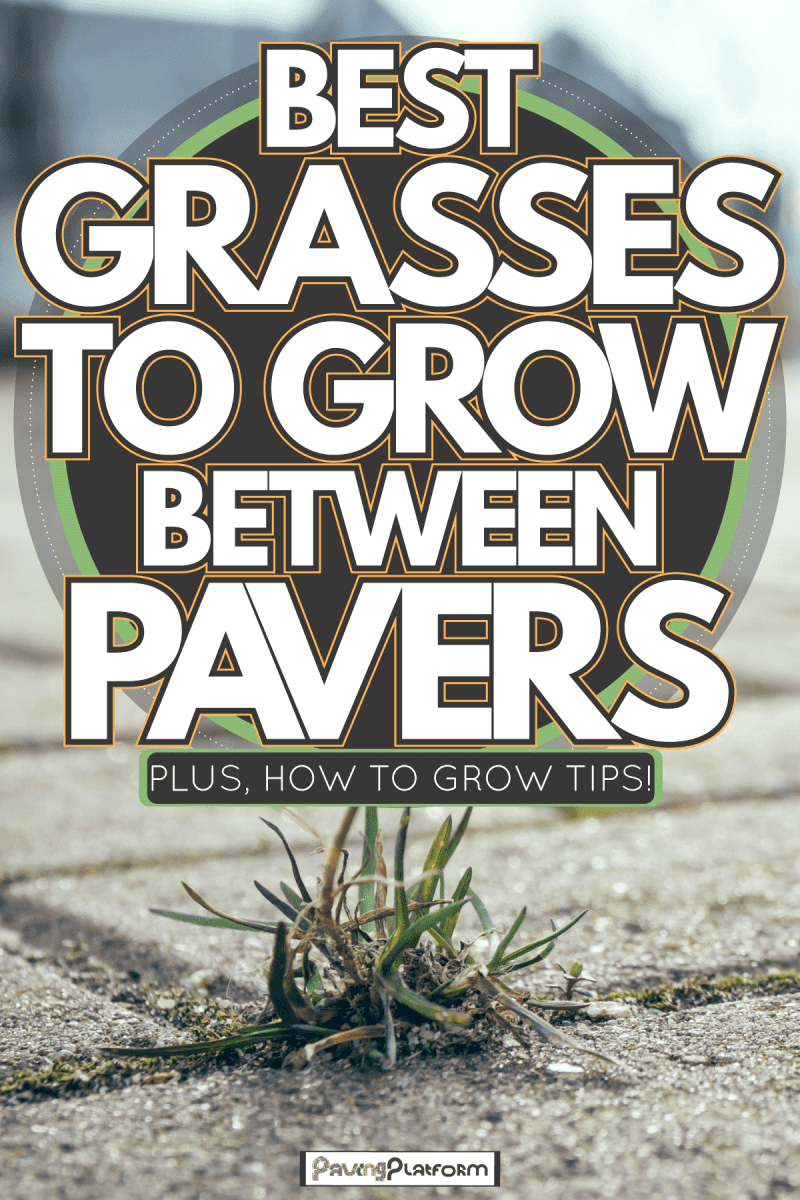
The Best Grasses To Grow In The Shade
Is your yard covered with trees? Here are some of the ideal plants to grow in the shade.
1. Blue Star Creeper
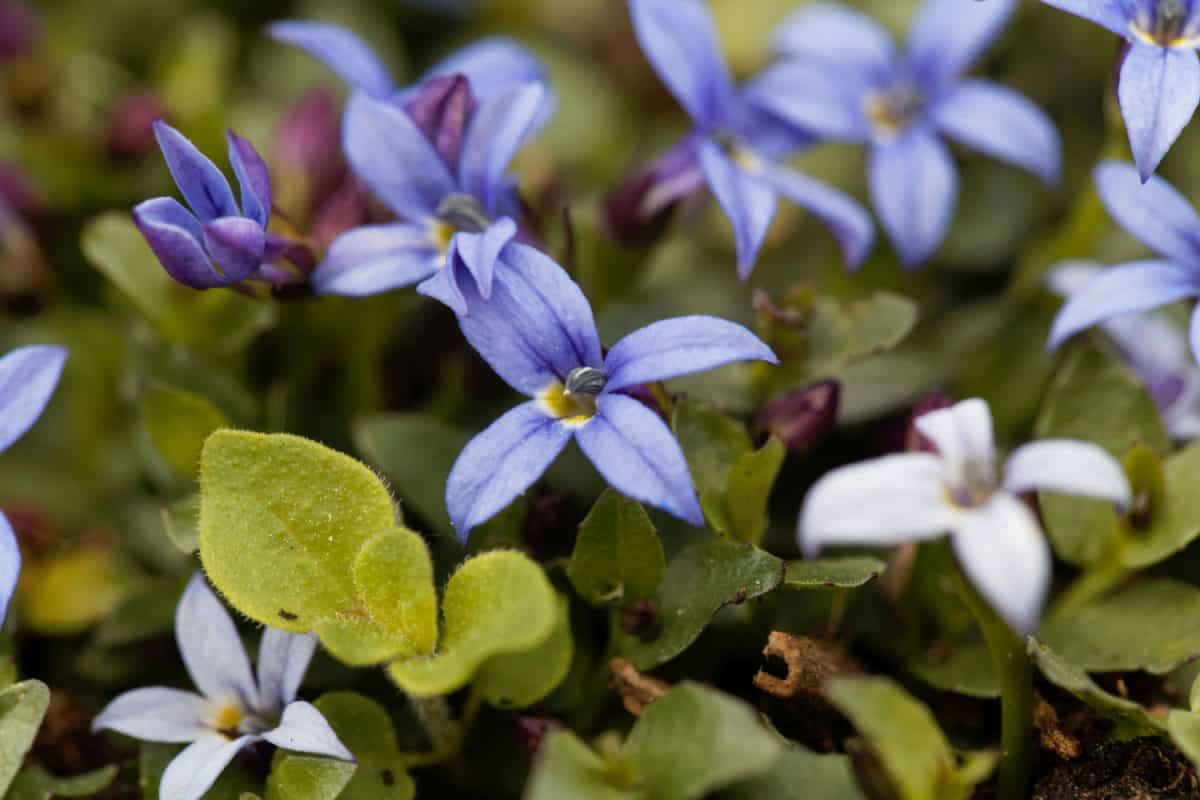
In a shady and damp hardscape area, this one is a perfect choice. Blue star creeper is a famous ground cover due to its star-shaped blue and white flowers. And they bloom during spring and summer. However, in dry seasons, it will require plenty of water.
2. Creeping Wire Vine
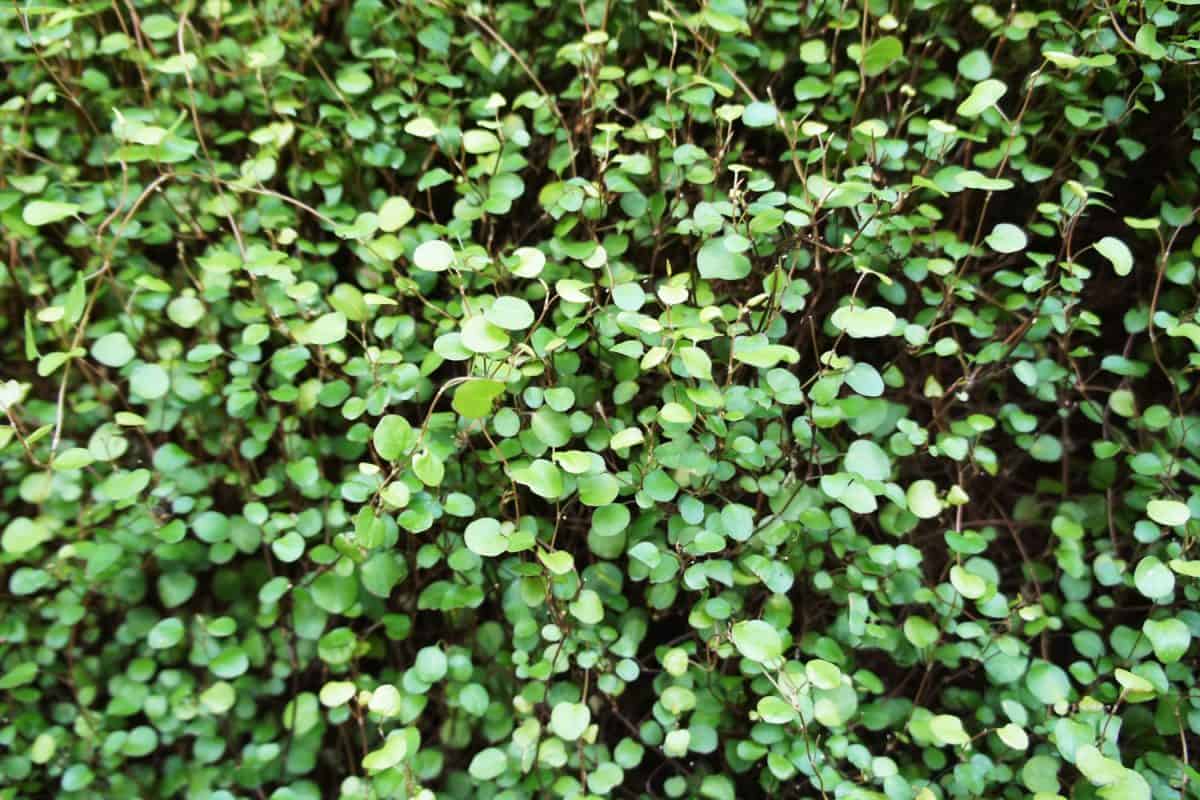
If you want to stabilize the soil between your pavers and prevent erosion, a creeping wire vine is the best option you can choose. This Australian native plant can grow even in too shady areas.
It is an excellent grass to grow between your pavers if the paver is in a high foot traffic area. This grass requires very low maintenance, and you can also mow it. In addition, this can grow in alkaline, neutral, or acidic soil.
3. Baby Tears
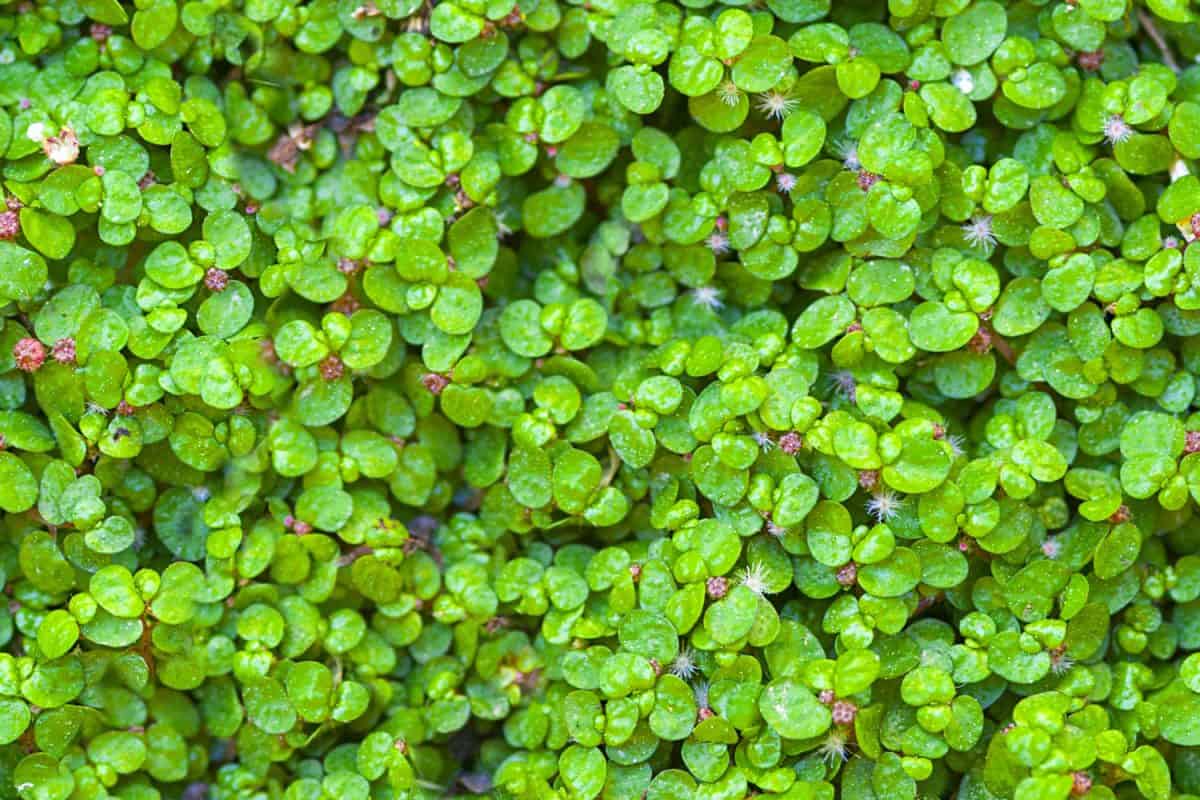
This grass is also known as angel tears and is native to the Mediterranean. Also, it grows sufficiently in a damp shade. Baby tears cover the ground with a soft, velvet emerald green surface. However, this plant can be susceptible to frost and may die quickly during winter.
You can easily divide baby tears and plant them around the pavers. And it is ideal for a shady fern garden or to function as ground cover beneath other plants. Furthermore, this plant will require regular watering.
The Best Grasses To Grow In The Sun
If your pavers are exposed to sunlight, we recommend these grasses to grow between your pavers.
1. Rupturewort
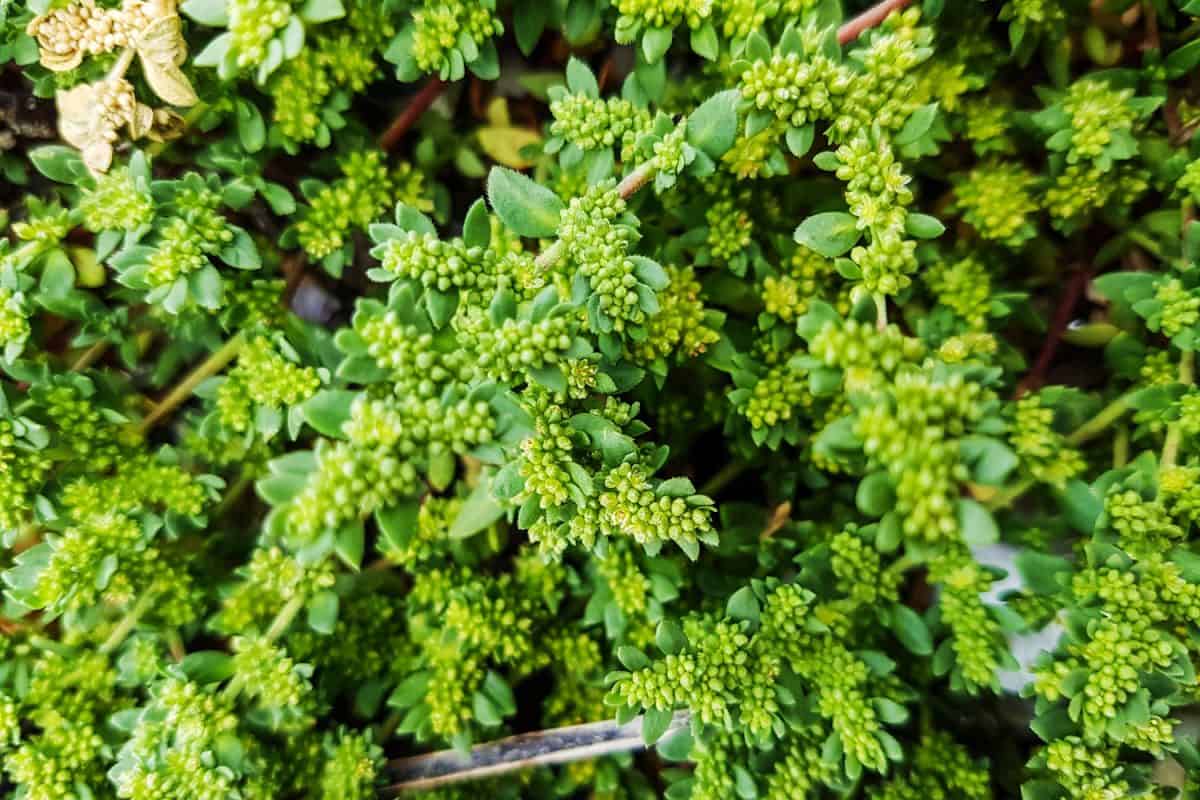
Rupturewort is a flexible plant fitting to grow on pavers with high traffic. And when we talk about the perfect choice for a grass to grow between pavers, this is the one we will recommend. Rupturewort can grow on a part shade or in full sun, flourishing in sandy and dry soil.
Moreover, rupturewort can reach only a few centimeters high, and it flowers only once a year. This plant is easy to maintain since it has a slow growth rate and creates a soft ground cover.
2. Kangaroo Grass
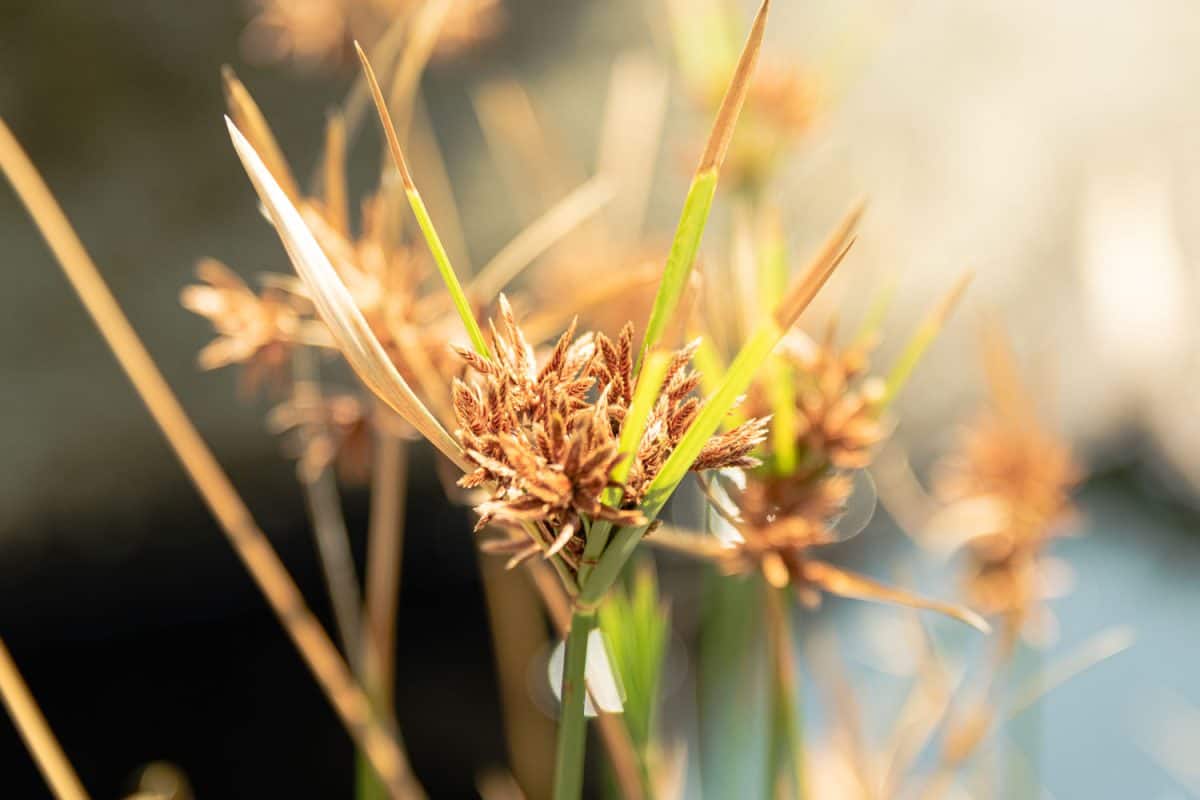
You can find this native plant almost throughout Australia. Its tolerance to drought can be excessively incredible, plus it requires just very low maintenance. And kangaroo grass needs mowing only once a year.
Moreover, you can use this as an ornamental plant since it has textured foliage and grows in tufts. But the most important thing here is we recommend kangaroo grass to use as a border to pavers and in low traffic areas.
3. Mondo Grass

This plant is mainly known as monkey grass. Mondo grass requires adequate moistness to survive. Also, it develops well in partial shade or full sun. This type of grass produces deep green foliage that requires very little maintenance.
How To Grow Grass Between Pavers
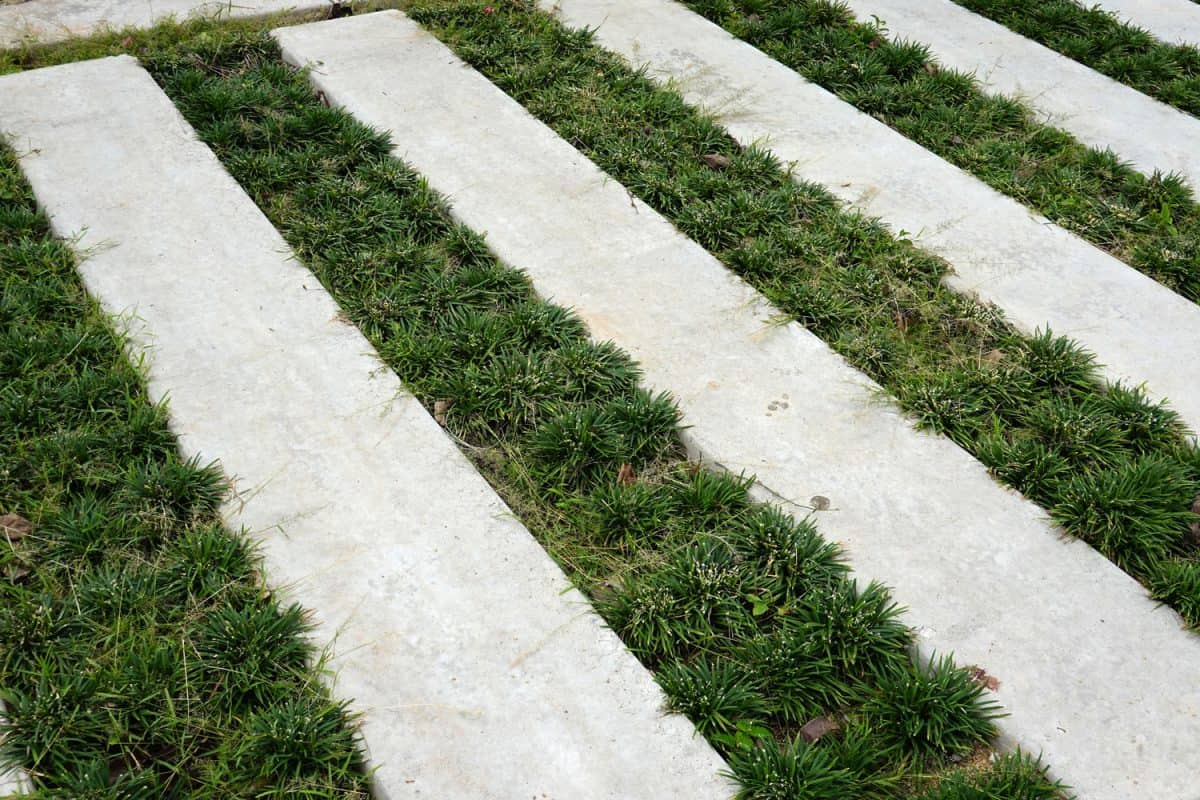
We are sure that you are now curious about how to grow grasses between your pavers since you already know what the best grasses are, so let's delve into the details.
1. Determine The Height Of Your Pavers In the Soil
The first step is to specify the elevation of the pavers you would want to be in the soil. It is to know how much distance the pavers will consume in the area. It is a must since if you rest the pavers on top of the soil, it will make planting grass between each paver more difficult.
Instead, use a tape measure or ruler to measure the height of your pavers. Doing it may give you a better idea of how you will organize the grass later on.
2. Dig The Area
Dig up six inches into the area where you plan to establish the pavers using a large shovel or a spade. And you may take time to excavate the area for a better outcome. You should dig up sufficient space since you will put layering soil and gravel beneath the pavers. While this may appear to be excessive, the space you dig must be deep enough since plant seeds need to be able to grow roots later on.
3. Collect The Removed Soil
Collect the soil from the excavation area in a large pile. As much as possible, don't get rid of the soil completely; just put it on one side of your area. You will need to reuse some when you start to install the pavers. You can use a wheelbarrow to make the collecting work easier.
Check this wheelbarrow on Amazon.
4. Fill In With Gravel
You will now have to fill in the excavated area with gravel. The gravel will be the foundation of your pavers. And this layer should be four inches thick to provide tight support to the pavers. However, consider making the gravel even thicker if you plan to have your pavers for heavy-duty tasks.
5. Compact The Gravel Layer
You can use a plate compactor for this process to compress the gravel layer. Flattening the gravel will make it stay level. If you don't have a plate compactor, you can consider buying a hand tamper or be creative and make some DIY compacting alternatives and compact the gravel layer manually.
Check this hand tamper on Amazon.
6. Position The Pavers
You can place the pavers as to what design you like, but you will need to organize them two to three inches apart. You must allocate that space between your pavers to allow the grass to have enough room to grow.
7. Layer The Topsoil
You will need to place the topsoil in the gaps between your pavers in this step. Get some dirt from the pile of soil you had collected earlier. Ensure that you are correctly and sufficiently filling in all the gaps. Plus, you should also make sure to have the soil loose so that the seeds can take roots more easily.
8. Place A Layer Of Compost
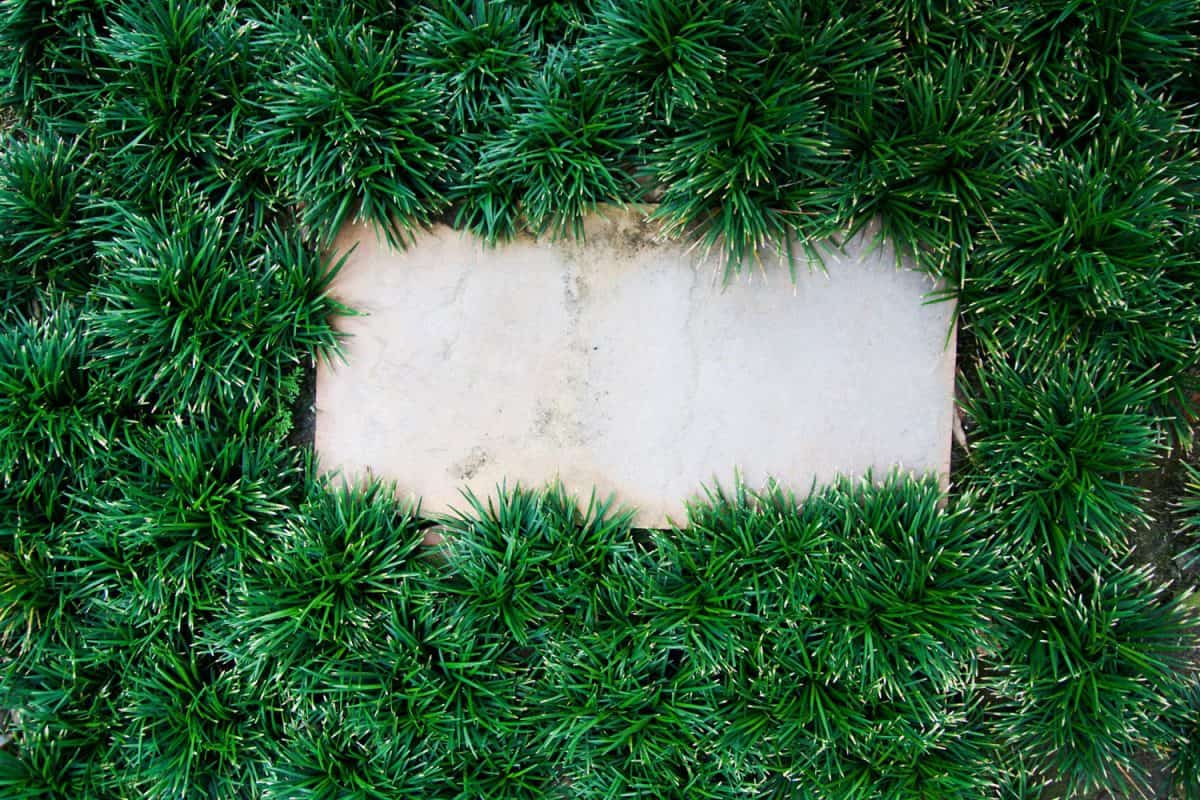
Cover any empty spots around the pavers with a compost layer. Grab enough compost and put it around the bare corners and edges of the pavers that doesn't have topsoil. And as much as possible, place the compost in small amounts to lock in some moisture at the soil's surface. You can use light soil if you don't have compost on hand.
9. Choosing The Seed To Plant
The seed you are going to choose should depend on where you live. However, you might want to consider low-growing seeds. Choose plants like creeping thyme or rupturewort if you are in a sunny area. But if you are in a partly sunny area, you can choose Irish moss, chamomile, or jewel mint of Corsica. Lastly, pick mondo grass or baby tears if you are in a shady area.
10. Trim A Pre-seeded Grass
You can cut pre-seeded grass to fit into the thin gaps. It is an excellent option if you want to achieve a green soil surface right away. Cut all the flat chunks of the pre-seeded grass using utility scissors into two sections, two to three inches wide. Position these sections pre-planted grass straight into the gaps.
11. Spread The Seeds
Read and follow the seed bag instructions to know how many seeds you need to spread over your pavers. Once you finish tossing the seeds on the paver surface, use a rake to mix and settle them into the soil.
12. Water The Seeds
For the final step, you will have to water the seeds regularly until you see them sprouting fully. You have to make sure that the seeds are getting enough water daily.
Wrapping Things Up
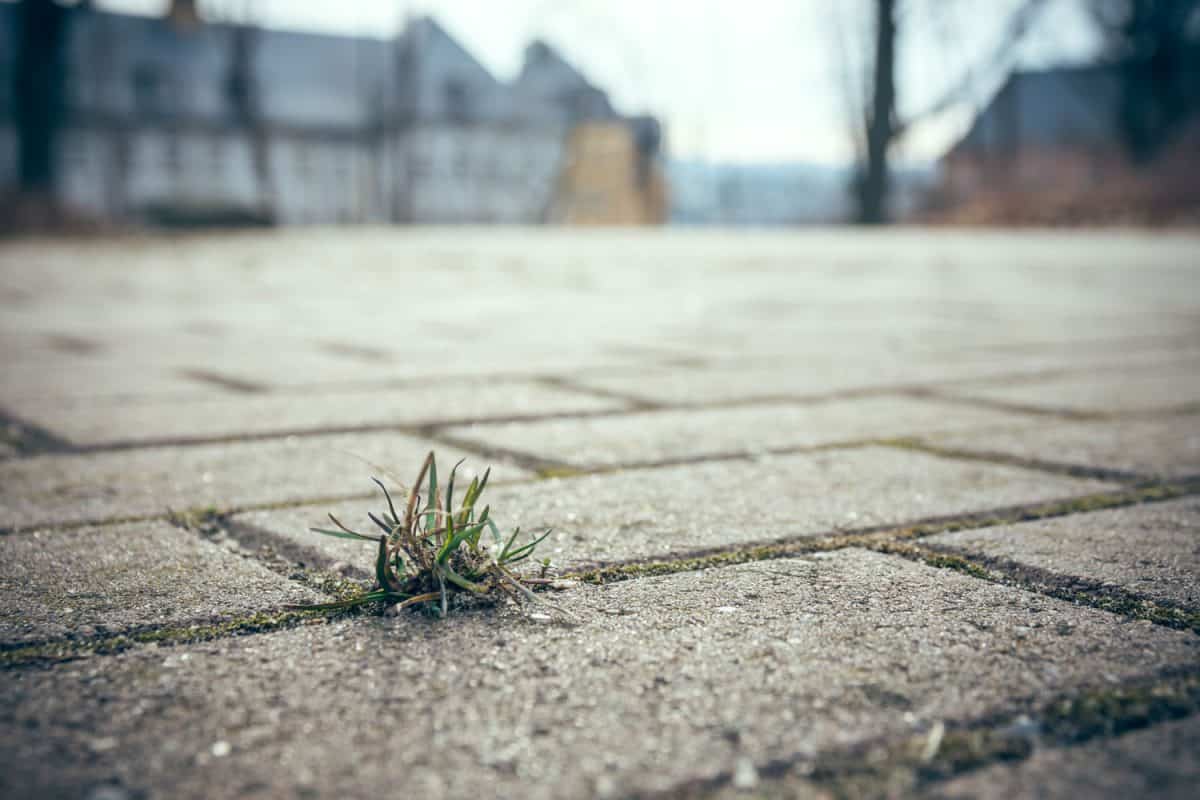
There is nothing more lovely than grass between your pavers. It is a huge help in the beautification and stabilization of the pavers. If you are still unsure what grass you will put on your pavers, you might take some ideas from gardeners. Most of them want easy-to-manage grass that doesn't grow over the pavers and has a low maintenance cost.
For further reading, check these out!
Can You Put Rubber Pavers On Grass? [And What To Put Underneath]
Can You Put Pavers On Mulch? [And How To Lay And Fill With Mulch]




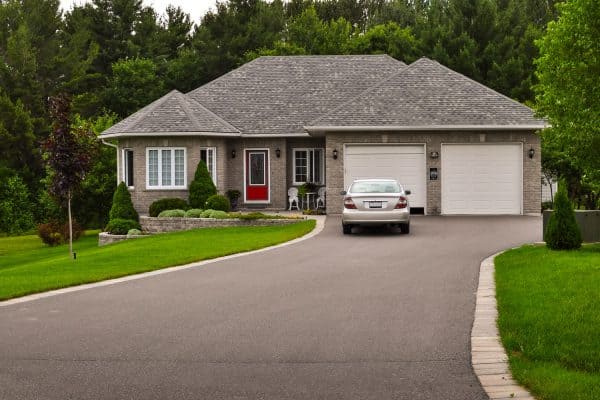
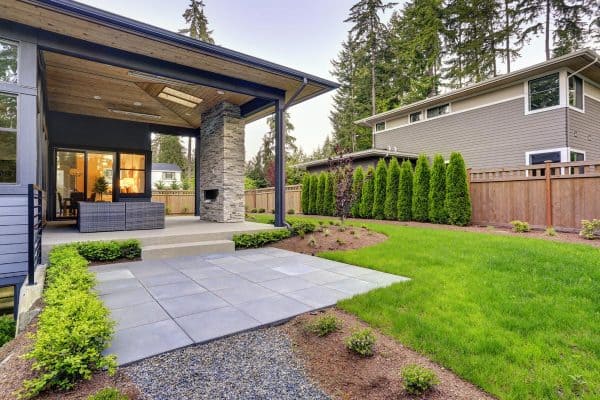
![Car on a parking lot which made from turf block, How Do Grass Pavers Work? [And Where To Use Them]](https://pavingplatform.com/wp-content/uploads/2022/03/Car-on-a-parking-lot-which-made-from-turf-block-600x400.jpg)